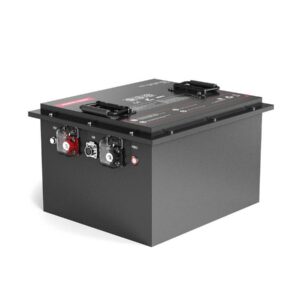
Is it OK to install higher CCA battery?
Yes, installing a higher CCA (Cold Cranking Amps) battery is generally safe if it physically fits and matches your vehicle’s voltage. Higher CCA provides stronger cold-start performance but must align with the alternator’s output and electrical system limits. Exceeding OEM CCA by 20–30% is acceptable for extreme climates, but drastic increases risk overtaxing starters or wiring.
What Is the Best Battery for a Diesel Pickup Truck?
What is CCA and why does it matter?
Cold Cranking Amps (CCA) measures a battery’s ability to start engines at 0°F (-18°C) for 30 seconds while maintaining ≥7.2V. Higher CCA ensures reliable ignition in cold climates but doesn’t affect total energy capacity. Vehicles in Arctic regions often need 20–50% more CCA than factory specs.

Technically, CCA reflects the battery’s peak discharge rate, calculated as current (amps) delivered before voltage drops below usability. Most gasoline cars require 400–600 CCA, while diesel trucks need 800–1,000 CCA. Pro Tip: Match CCA to your coldest local temperatures—a 650 CCA battery in Minnesota winters outperforms a 500 CCA unit. For example, upgrading a sedan from 500 to 650 CCA reduces cranking strain by 23% at -10°C. However, excessively high CCA (e.g., 900 CCA in a compact car) wastes capacity and adds weight. Think of CCA like a sprinter’s burst energy: essential for the initial push but irrelevant for endurance.
Can excessive CCA damage my vehicle?
While rare, overly high CCA batteries can strain starters or alternators not designed for heavy loads. Modern vehicles with smart regulators usually self-adjust, but older models may experience voltage fluctuations or overheating.
Mechanically, starters draw only the current they need, so a 1,000 CCA battery won’t “force” extra amps into a 600 CCA system. However, alternators must recharge larger batteries, which in weak or aged charging systems could cause premature failure. Pro Tip: If your alternator’s output is below 100A, avoid batteries above 800 CCA. A real-world example: A 2010 Ford F-150 with a 130A alternator safely handles a 850 CCA battery, but pairing it with a 1,200 CCA unit might shorten alternator life by 30–40%. Transitionally, while CCA itself isn’t destructive, system compatibility dictates safety.
| OEM CCA | Upgraded CCA | Risk Level |
|---|---|---|
| 600 | 750 | Low |
| 800 | 1,000 | Moderate |
| 500 | 1,200 | High |
How to choose the right CCA upgrade?
Calculate needed CCA using temperature-adjusted formulas: Base CCA = OEM recommendation × (1 + [0.01 × °F below 32]). For -20°F climates, multiply OEM CCA by 1.4–1.5. Always verify terminal types and BCI group size compatibility first.
Consider three factors: climate severity, vehicle age, and electrical loads. Diesel engines, plow trucks, or cars with aftermarket stereos benefit more from CCA boosts. Pro Tip: AGM batteries handle higher CCA with less sulfation than flooded lead-acid. For example, a Wisconsin driver with a 2018 Ram 2500 (factory 800 CCA) should opt for 1,000–1,100 CCA to counter -30°F starts. Transitionally, balancing performance and longevity requires meticulous planning.
| Climate Zone | Recommended CCA Multiplier |
|---|---|
| Mild (50°F+) | 1.0x OEM |
| Cold (0°F to 32°F) | 1.2x OEM |
| Arctic (<0°F) | 1.5x OEM |
Does higher CCA improve warm-weather performance?
Not significantly—CCA primarily addresses cold starts. In warm climates, reserve capacity (RC) and amp-hour (Ah) ratings matter more for accessory load support. Overprioritizing CCA here wastes money on unutilized power.
Technically, a 700 CCA battery performs identically to a 900 CCA unit at 70°F since both meet the engine’s minimum cranking voltage. However, high CCA batteries often have thicker plates, which marginally improve cycle life. Pro Tip: In Arizona or Florida, choose batteries with RC >120 minutes instead of max CCA. For instance, a Honda Accord in Miami benefits more from a 600 CCA/140 RC battery than a 800 CCA/90 RC model. Transitionally, climate dictates which battery metric deserves focus.
Battery Expert Insight
Upgrading CCA is smart for cold climates but demands system-wide checks. Modern AGM and lithium-ion batteries offer 20–30% higher CCA in compact sizes. Always validate alternator compatibility—exceeding 150% of OEM CCA risks voltage drops during recharge cycles. Strategic upgrades enhance reliability without compromising vehicle electronics when done correctly.
Best Lithium Car Batteries for Cold Cranking Amps
FAQs
Will a higher CCA battery drain faster?
No—parasitic drain depends on the vehicle’s electronics, not CCA. However, larger CCA batteries may have lower reserve capacity, reducing accessory runtime if engine-off.
Can I mix CCA ratings in dual-battery setups?
Avoid it—mismatched CCA causes uneven load distribution. Use identical batteries to prevent one unit overworking and failing prematurely.
Does CCA affect warranty coverage?
Most manufacturers honor warranties if CCA is within 25% of OEM. Exceeding this may void coverage if damage is linked to excessive cranking loads.
